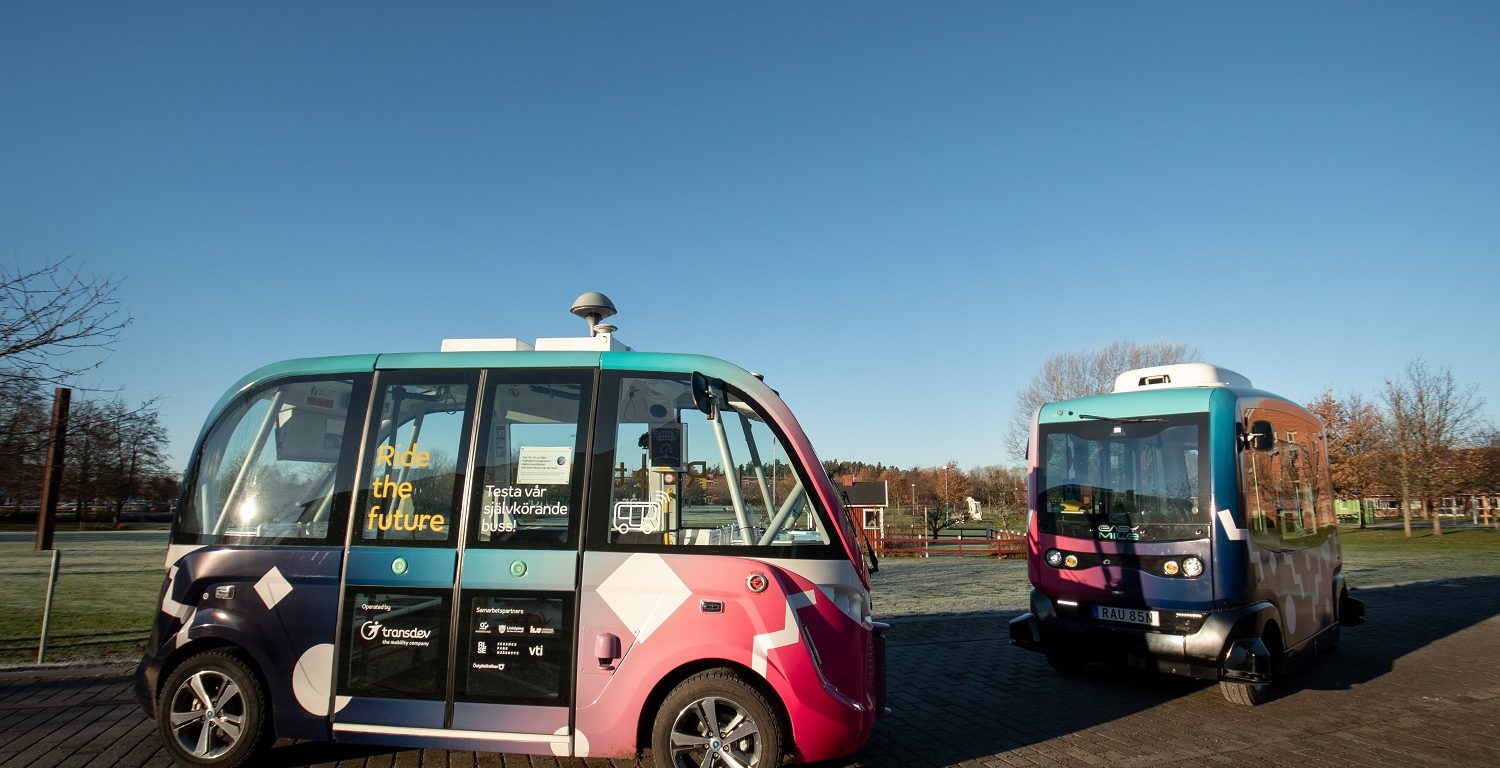It has now been a year since two autonomous and electric shuttles started running on the campus area in Linköping. Despite a year marked by a pandemic, the shuttles in the research project « Ride the future » have managed to drive just over 5,700 km, which corresponds to the entire route Linköping-Madrid round trip. The next step is to test the buses in an urban environment in Vallastaden.
After a lot of work, we have started the operational activities with two shuttles that run on Campus. The journey here has been very educational. The pandemic has meant that the operations with the autonomous shuttles have had to be adapted and this has also affected our research projects. But despite this, several projects with connections to the shuttles are underway.
Anna Anund, Head of Research at the Swedish Road and Transport Research Institute, VTI
One of the research projects conducted with the shuttles as a platform focuses on making public transportation more accessible to people with visual impairments through various digital tools. The project Synnedsattas Resande (Visually Impaireds’ Travel Habits) is funded by the National Knowledge Center for Public Transportation, K2. The autonomous shuttles are also part of the EU project SHOW, the purpose of which is to demonstrate how the different transport solutions of the future can be integrated and work together in a city.
What is exciting about an open research platform like this is the great breadth. Researchers are welcome to come up with new issues and areas of use for the platform and use it as a resource in their project applications. We already have projects in many different areas and new ones are added all the time.
Mikael Asplund, Associate Professor of Computer Science at Linköping University and Research Coordinator for the autonomous vehicles
Since the inauguration in March 2020, the autonomous vehicles have had just over 1,600 passengers on board. Due to the prevailing pandemic, the buses have been running without passengers since December and only for research purposes.
The autonomous shuttles will arrive in Vallastaden in 2021
We look forward to the next step in the project where our autonomous shuttles will connect the campus with Vallastaden. Already today, the shuttles drive in different contexts, on roads with cars and buses and on the campus’ main lane « Corson » among pedestrians and cyclists. In Vallastaden, we will also see how the shuttles can create better travel opportunities between public transport stops and destination points such as service housing and schools and become a real complement to traditional public transport.
Christian Monstein, Business Development Manager at Transdev Sverige AB
The project has already received a temporary permit from the Swedish Transportation Agency to do preparatory work to be able to drive the vehicles autonomously during the second half of 2021. For residents, this means that already in the spring they will see the autonomous shuttles drive manually through Vallastaden as a first step.
It is quite amazing that Linköping will be one of the first municipalities in Sweden to test autonomous vehicles in an urban environment. We are investing heavily in the mobility of the future and therefore it was also obvious for us to participate in the continuation of the project and invest an additional SEK 1.5 million in the autonomous shuttles.
Muharrem Demirok, Municipal Councilor in Linköping municipality
Facts:
“Ride the future” is a research project whose purpose is to find out how electrified and autonomous shuttles can complement existing public transportation and thereby increase public transit’s competitiveness vis-à-vis the privately owned car and make it easier for more people to travel by public transportation. The partners in the project are VTI, Linköping University (LiU), Östgötatrafiken, Transdev, Akademiska hus, RISE, Linköping Science Park and Linköping Municipality.
The shuttles operate a 2.1 kilometer long section of the campus area in Linköping with eight stops. Unique to the project is that we work with two different vehicles that interact with each other: Navya Autonomous Shuttle DL4 and EasyMile WZ10 gen2 which takes 11-13 passengers.
A safety driver is on board on each turn and is responsible for the vehicle’s driving by monitoring the driving and, if necessary, takes over manual control and acts as a customer host.
Photo credit: © Erik Widén, County Administrative Board of Östergötland

